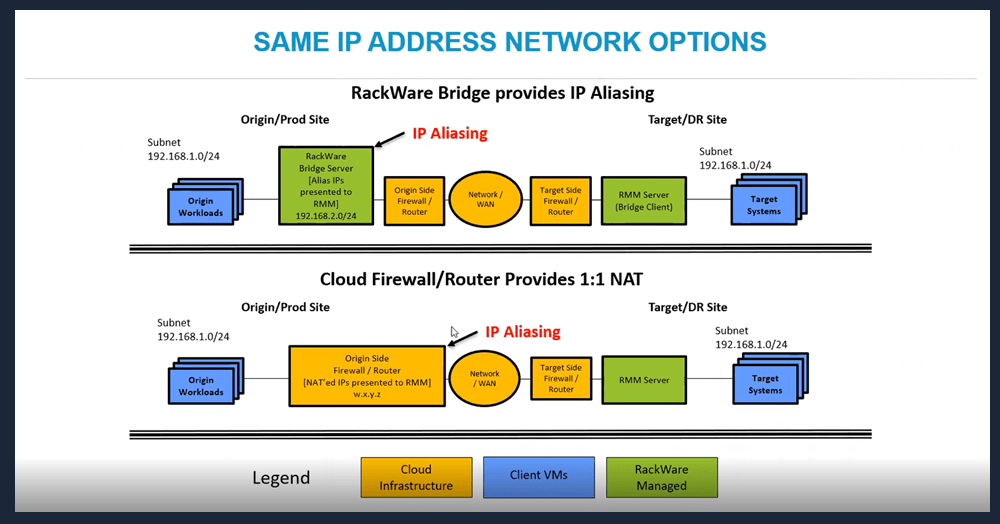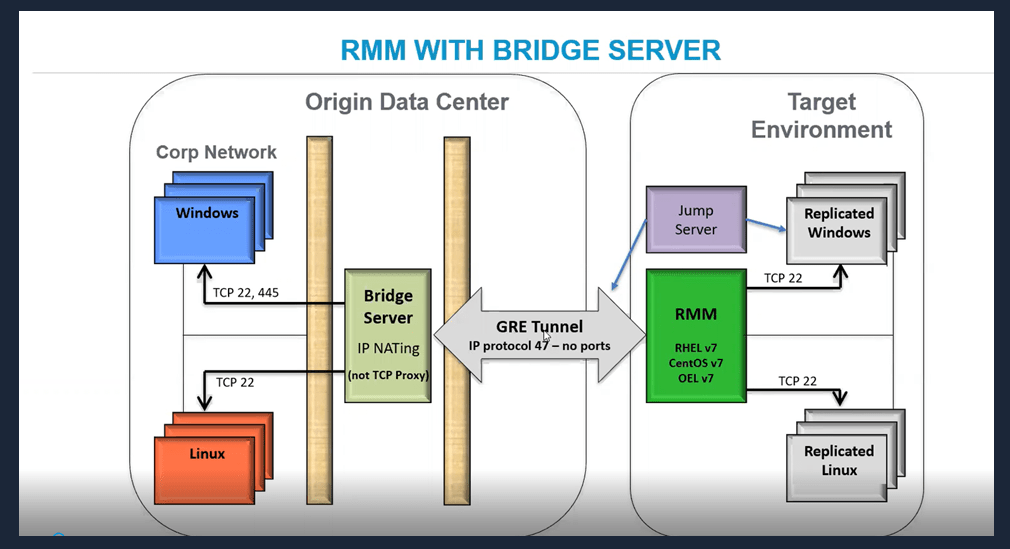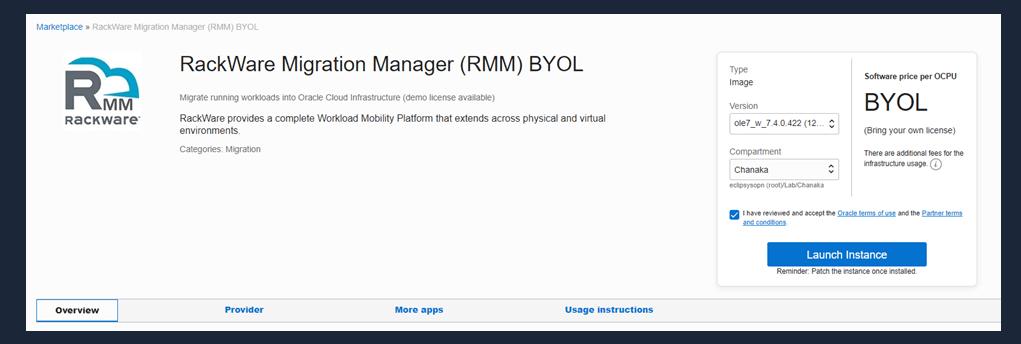OCI OEM Installation – (Using Market Place Image)
Introduction Monitoring plays a major part in mission-critical environments. Most businesses depend on IT infrastructure. As the ... Read More
Découvrez pourquoi Eclipsys a été nommée 2023 Best Workplaces in Technology, Great Place to Work® Canada et Canada's Top 100 SME !
En savoir plus !
Migrating Application and Database Servers from on-prem to Cloud is really challenging. Current era organizations are focusing to stretch towards Clouds to optimize their workloads. This gives immense pressure on IT Architects and administrators on how swiftly and smoothly they can migrate servers to the Cloud.
After the migration, the next challenge is to have an optimal DR (Disaster Recovery) Strategy. The best practice would be replicating the servers to different regions. There are many tools in the market to address these challenges,
RMM is a great tool to address migrations and DR strategies.
RackWare Migration Manager (RMM) is a third-party application that we employ as a Cloud Migration and Disaster Recovery solution. RMM is compatible with all of the major cloud providers including Oracle, Microsoft Azure, Amazon Web Services (AWS), and Google Cloud, and can also be used in On-premise scenarios.
The product consists of the following areas :

At a high level, the RackWare CloudMotion process consists of:
This figure illustrates how the RackWare Bridge provides the IP Aliasing.


As a partner, to obtain licensing for POC purposes we can email licensing@rackwareinc.com to obtain a 30 day trial license.
3. Provisioning from an OCI Marketplace image

In this article, we covered only product overview and deployment methods. Next article we will cover the installation and configuration part of the RMM server.
Introduction Monitoring plays a major part in mission-critical environments. Most businesses depend on IT infrastructure. As the ... Read More
Introduction We are living in a data era. Every organization invests in a colossal sum of money to secure its IT infrastructure environment. ... Read More